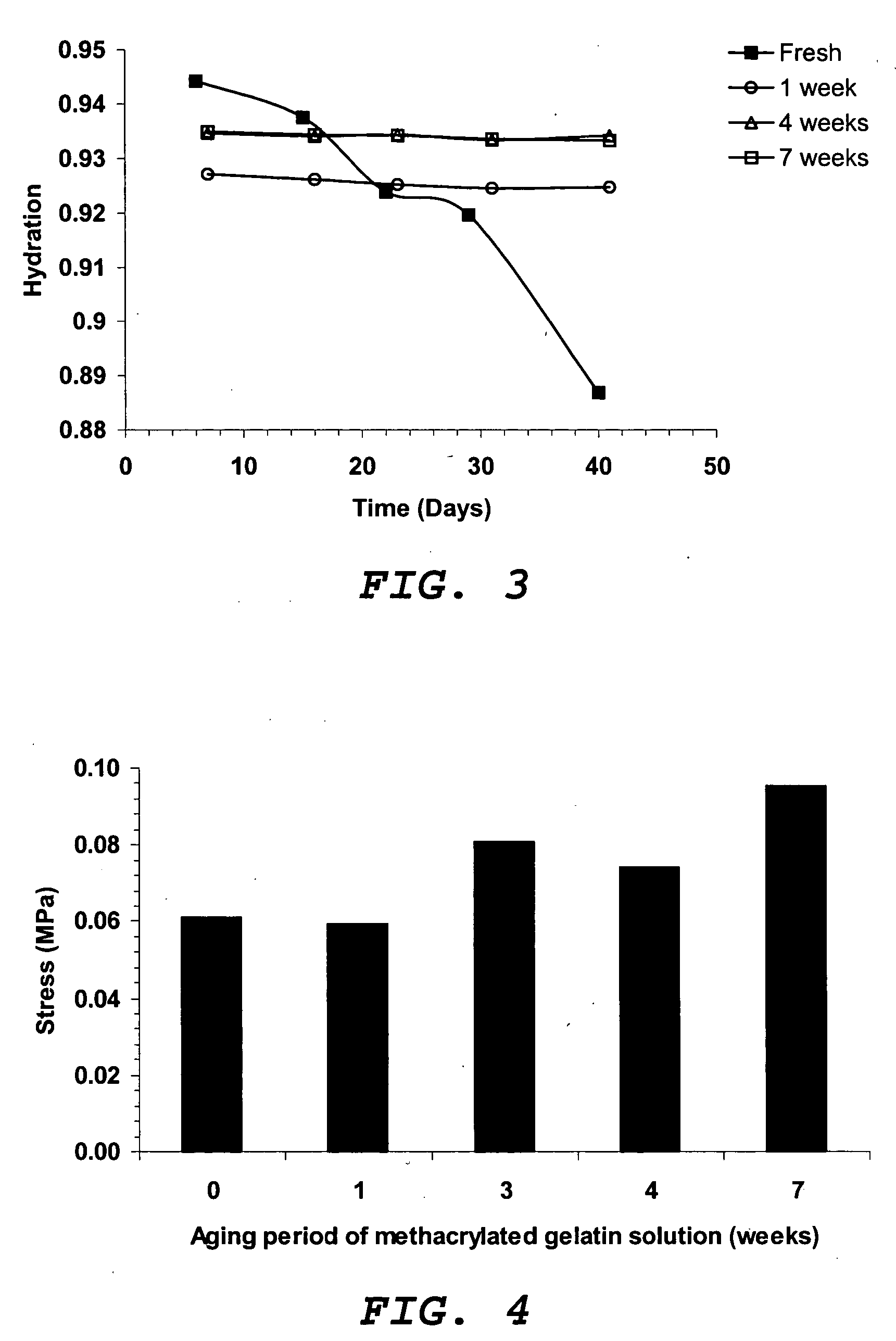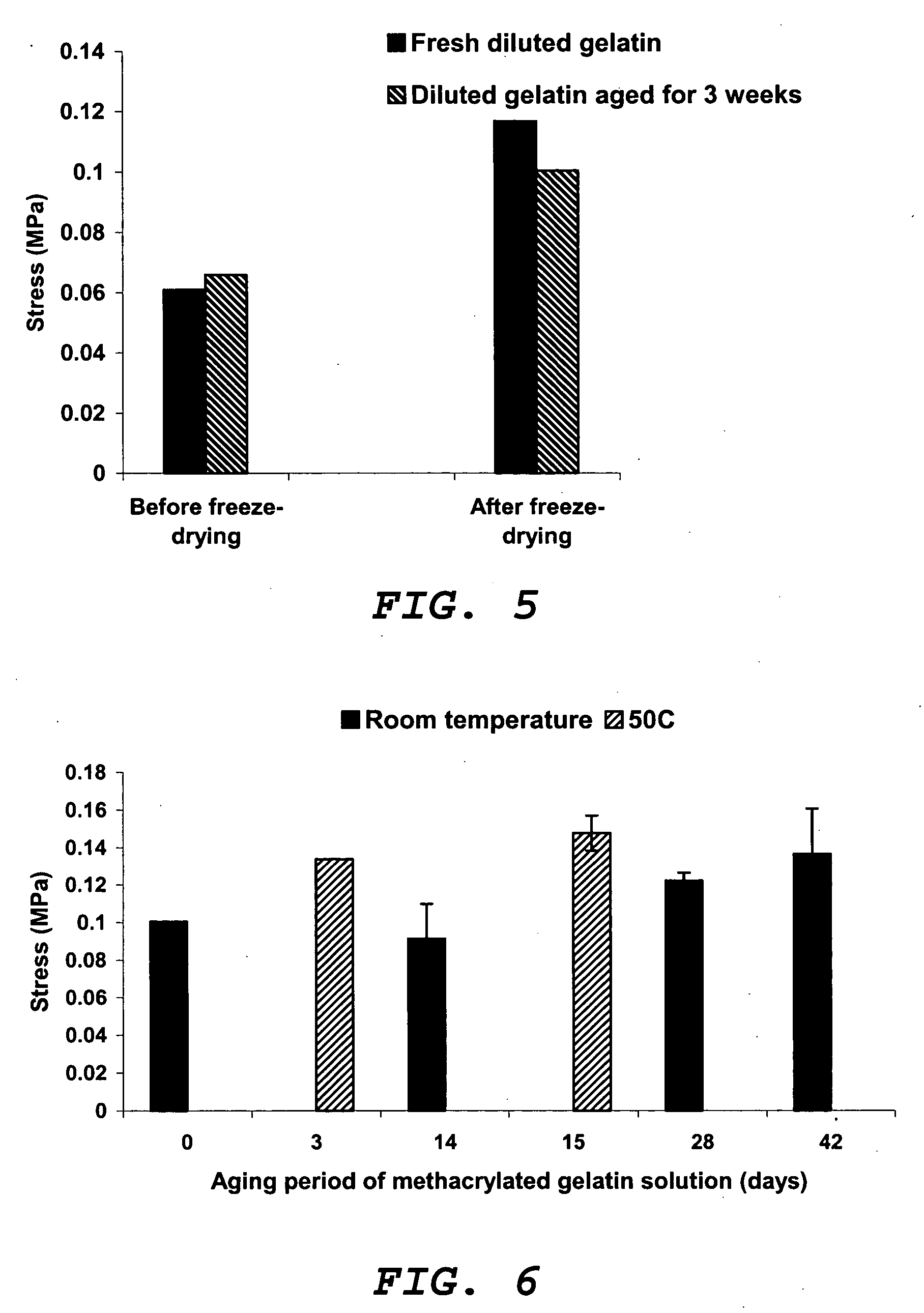Method of producing interpenetrating polymer network
- Summary
- Abstract
- Description
- Claims
- Application Information
AI Technical Summary
Benefits of technology
Problems solved by technology
Method used
Image
Examples
example
Methacrylation of Gelatin
[0033] 10 g of gelatin Type A Bloom 235 available form Great Lake Gelatin (Grayslake Ill.) was added to 100 mL of phosphate buffered saline (PBS, pH 7.4) and the mixture was stirred at 50° C. until complete dissolution. A 0.5 mL aliquot of 94% methacrylic anhydride was added to the gelatin solution. The reaction mixture was stirred for 60 min at approximately 50° C., and dialysed against distilled water at room temperature for one week before freeze-drying for 4 to 6 days. The dialysis membranes that were used had a molecular weight cut-off of 12000-14000.
Preparation of Fresh and Aged Methacrylated Gelatin Solution in DMSO
[0034] A 7.5 wt % methacrylated gelatin solution was prepared in DMSO (hereinafter referred to as ‘fresh’ methacrylated gelatin) and immediately used for preparation of an interpenetrating polymer network (IPN). Another batch of 7.5 wt % of methacrylated gelatin solution was prepared in DMSO and (a) left at room temperature for 1 to 8 ...
PUM
| Property | Measurement | Unit |
|---|---|---|
| Temperature | aaaaa | aaaaa |
| Temperature | aaaaa | aaaaa |
| Time | aaaaa | aaaaa |
Abstract
Description
Claims
Application Information
 Login to View More
Login to View More - R&D
- Intellectual Property
- Life Sciences
- Materials
- Tech Scout
- Unparalleled Data Quality
- Higher Quality Content
- 60% Fewer Hallucinations
Browse by: Latest US Patents, China's latest patents, Technical Efficacy Thesaurus, Application Domain, Technology Topic, Popular Technical Reports.
© 2025 PatSnap. All rights reserved.Legal|Privacy policy|Modern Slavery Act Transparency Statement|Sitemap|About US| Contact US: help@patsnap.com



